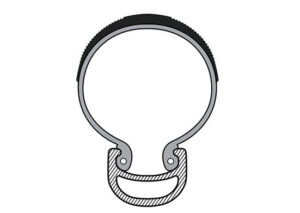Enve and Zipp hookless rims and Rene Herse tires
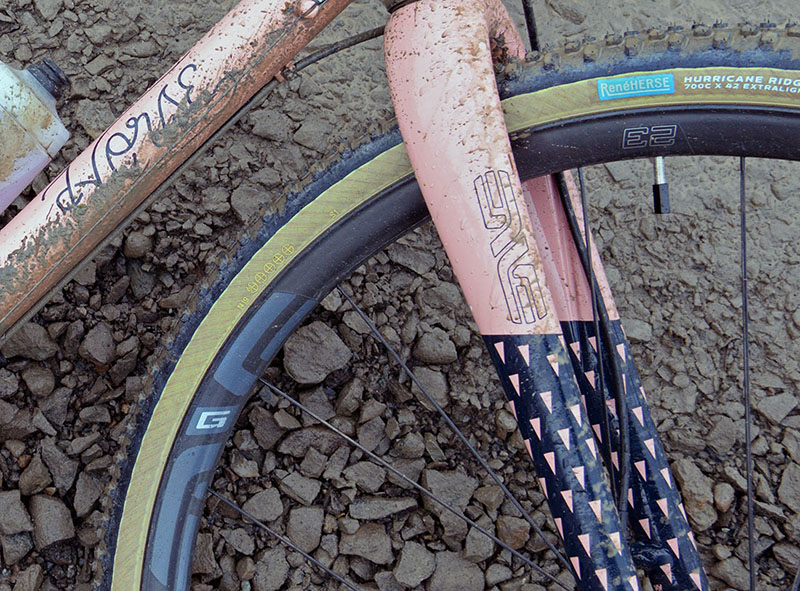
Rene Herse tires are safe to use on hookless rims from Enve and Zipp – even when mounted tubeless (for tubeless-compatible tires). Over the last year, we’ve worked with the engineers from both companies to ensure the full compatibility of our tires with their rims.
Tubeless tires are an emerging technology. They’ve been around for decades on cars and motorcycles, and they’ve taken over mountain biking in a storm, too. These are all relatively stiff tires that run at relatively low pressures.
Adapting the technology to road, all-road and gravel bikes has posed special challenges. The supple high-performance tires we love have less casing stiffness, and they run at somewhat higher pressures. (Few cars, motorcycles and mountain bikes exceed 2.5 bar/35 psi.) Both factors combine to create much greater forces at the tire/rim interface than on other vehicles.
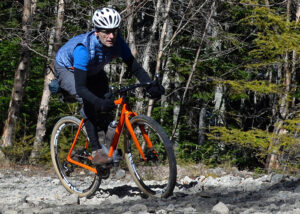
At Rene Herse Cycles, we’re always interested in new technologies for off-pavement riding, and we’re working with other rim and tire companies to establish the first ISO standards for tubeless tires. These standards still are some ways out, but our collaboration is already showing results.
Over the last year, we’ve worked with Enve’s engineers to make sure that our tires are safe on their hookless rims – even when mounted tubeless. Most carbon rims are hookless, because creating the hook requires a very complex mold. It’s not so much the associated cost that had Enve move to hookless rims: The simpler hookless mold allows them to make their rims to closer tolerances. Instead of a variation of 2 mm in the diameter of a rim with hooks, Enve’s hookless rims are within 0.2 mm. This means that the tire fit is much more consistent. And good fit is what you want for tubeless tires.
Since the hook helps retain the tire bead (above), we were wary when hookless gravel and all-road rims were first introduced. Hookless rims work great with low-pressure, stiff mountain bike tires. They are fine with many gravel tires that are derived from mtb tires. But how would they perform with our supple high-performance tires? Would the benefits of the better tire fit outweigh the missing ‘safety net’ of the hooks?
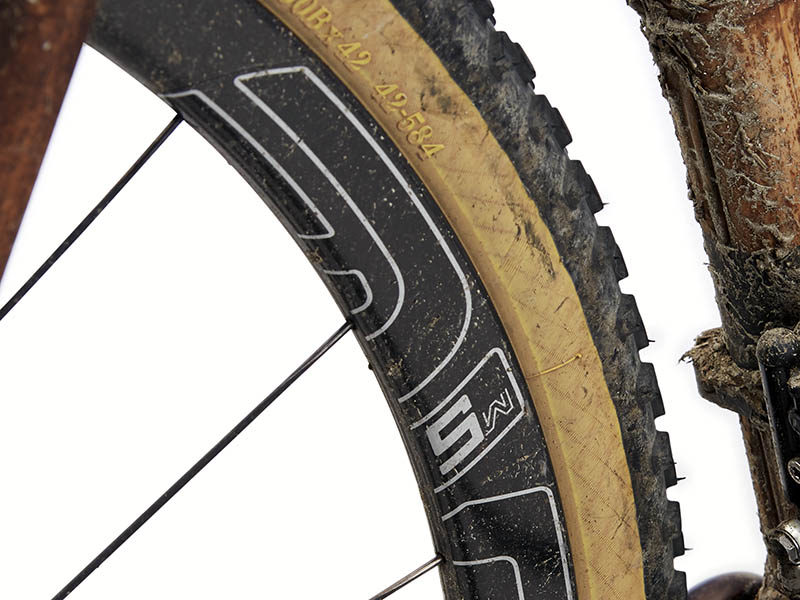
We tested a number of tires and rims, and Enve also tested multiple samples of our tires with all four different casings: Standard, Extralight, Endurance, Endurance Plus – more than 16 tires total. Enve tested the bead length, bead stiffness, casing stiffness, blow-off pressure and a number of other parameters.
Now the official report is in: Our high-performance tires have passed Enve’s tests with flying colors – confirming what we’ve found ourselves. Rene Herse tires (all casings) are safe to use with Enve rims. For tubeless installations, you need tubeless-compatible tires (marked ‘TC’). And don’t exceed the maximum of 60 psi (4.1 bar) that we recommend for tubeless tires – plenty for most gravel and all-road applications. The actual blow-off pressures are much higher, but we really don’t want to take any risks.
Enve also confirmed that the diameter of our Rene Herse tires is very consistent, so there is little danger of getting a tire that fits poorly because it’s a bit on the large side. Together with the close tolerances of Enve’s hookless rims, this creates a predictable, secure fit of the tire on the rim.
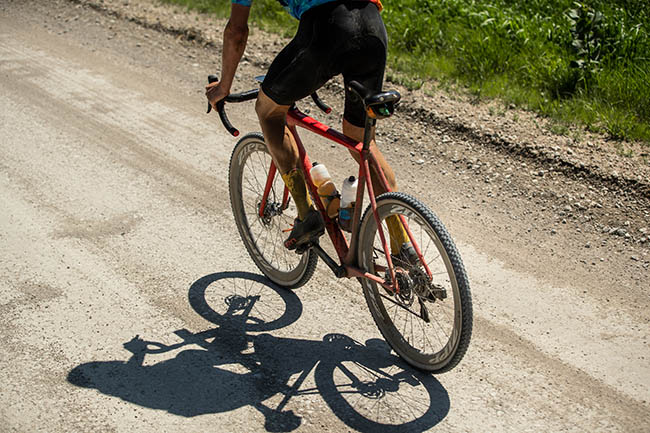
We’ve also worked with Zipp to ensure optimum tire/rim compatibility. Zipp’s engineers confirmed what we found in our own testing: Eliminating the hook decreases the blow-off pressure, but if the rim’s diameter is within very narrow tolerances, the better tire fit makes up for that. As a result, Zipp rims are safe to use with Rene Herse tires, too. And indeed, Ted King (above) has been running his Rene Herse tires tubeless on Zipp rims for over a year now, with zero problems.
What about running Rene Herse tires on other hookless rims? It really depends on the quality of the rim. If the diameter is just right, there shouldn’t be any problem. That is one advantage of carbon: The rims come out of a mold, so they can be very consistent – if they are manufactured with quality tooling and with care. (Removing the rims from the mold before they are fully cured, to speed up production, can distort them.)
What about aluminum rims? They are formed from extrusions (imagine squeezing frosting out of a pastry bag when icing a cake). They can be any cross-section, and putting hooks to the sidewalls is easy. Aluminum rims are rolled into a circle and welded together, which means that the tolerances for the diameter are always going to be a bit greater. So it’s good to have the hook as an additional precaution against blowing the tire off the rim.
In other words: top-quality hookless carbon rims are fine, but aluminum rims need hooks. The correct diameter is important for both, of course – it’s just that the hooks of an aluminum rim give you an extra layer of safety to make up for the larger manufacturing tolerances.
When you mount your tires, pay attention to how the tire goes onto the rim: If the fit is a little tight as the tire seats, then the diameter is correct. Ideally, the fit should be good enough that a floor pump is all you need to seat the tire. There is nothing wrong with using a compressor, but if you need repeated large blasts of air to seat the tire, then the rim is probably undersized. We recommend building up the rim bed with extra layers of tape, but there is only so much you can do before the rim’s sidewalls aren’t tall enough to hold the tire securely. (The current ETRTO standard requires inner sidewalls with a ‘G height’ of 5.2 – 6.5 mm.)
When in doubt, you can always run your tires with tubes. The tube reinforces the joint between tire and rim, and the risk of blow-offs is much-reduced.
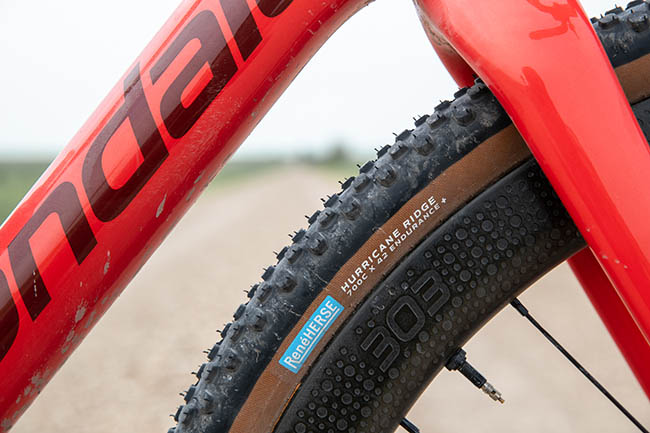
Tubeless technology is maturing, and rim makers are realizing that the rim tolerances need to be closer than they were in the old days. Enve and Zipp have shown that the best hookless rims can be safe with high-performance tires.
Click here for step-by-step instructions how to set up supple high-performance tires tubeless.


